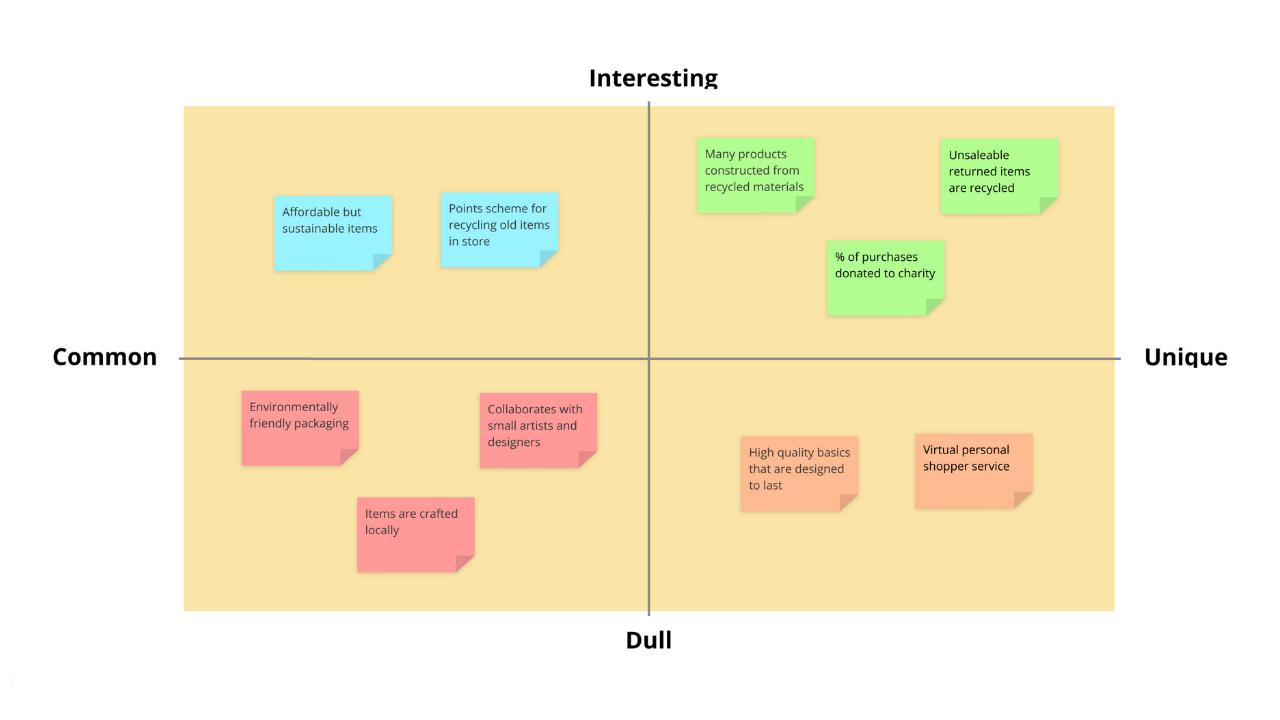USP Analysis template

Ayoa’s USP Analysis template will help you to define a unique selling proposition for your brand by examining how you stand out from your biggest competitors, so you can successfully convey this to your desired customers.
What is a USP (unique selling proposition)?
Every successful business should have a USP (‘unique selling proposition’ or ‘unique selling point’) that forms the basis of its branding and marketing strategies. Sometimes also referred to as a UVP (unique value proposition), this will typically be in the form of a concise yet memorable description of the reason why your customer should choose your brand over a competitor. For example, Nike’s USP is that they provide high-quality shoes specifically for athletes.
Defining your USP is essential for determining why you stand out from your biggest competitors – particularly if you operate in a niche or oversaturated market. You can then determine the most effective ways to convey this to your customers through your various marketing efforts.
Although a brand’s unique selling proposition is often defined when creating a business plan, Ayoa’s USP Analysis template helps you to focus solely on the process of crafting the most effective USP for your brand by examining the values you bring to customers, and whether these benefits are actually unique and exciting. This is because your USP should be at the heart of everything you do as a business – so it should be one of the things that are clarified as early on as possible.
Why should you use our USP Analysis template?
With many markets quickly becoming oversaturated, standing out from your competitors is key – and having a powerful USP can do just that. However, because your USP should be conveyed in your various marketing efforts, from your advertising copy to your business’s website, Ayoa’s USP Analysis template encourages you not just to list your key selling points, but to consider whether they are ‘interesting’, ‘dull’, ‘common’ or ‘unique’ compared to those of your competitors.
Your unique selling proposition should appeal directly to the needs of your customers and what you can do to fulfill them directly. This is why our USP Analysis template also encourages you to consider the various benefits you bring to your customers and the different ways you can address their problems, so you can create a truly powerful USP.
How to use our USP Analysis template
Ready to define a winning USP for your brand? Our USP Analysis template is incredibly easy to use as it is already set out in the format you need to rank your key selling points in terms of how interesting and unique they are. Discover how to use it below.
To access the template, sign up to Ayoa. Once you've signed up, navigate to the homepage to create a new whiteboard, mind map or task board and choose this template from the library.
Before you define your USP, you need to think about the ways you’re bringing value to customers and the various benefits you deliver that help you to stand out from others in your market. Add as many of these as possible to the template using sticky notes.
Think about what makes your business unique and the reasons why your customers choose you; in fact, you may find it beneficial to ask your existing customers why they chose you over other options on the market.
Don’t worry about which category you put them in if you’re unsure of where they should rank on the axis; you can organize these properly at a later stage. The most important thing at this point is to ensure that you have as many benefits listed as possible.
Now it’s time to define whether your selling points fit into the following categories:
- Interesting and common
- Common and dull
- Interesting and unique
- Dull and unique
To determine this, conduct research into your competition to clarify if they’re also offering these selling points (if many of them are, they would be considered to be ‘common’). You should also ask yourself whether each benefit is interesting enough to encourage customers to choose you over another business offering similar products and/or services. Would they grab their attention if they were used in an advert, for example?
When you’re ready to organize your ideas, simply drag and drop your sticky notes to move them to a different section of the template!
Refer to any selling points you’ve organized into the ‘interesting and unique’ section to help you define a USP that will form the basis of your branding and marketing strategy going forward. Your unique selling proposition doesn’t have to be paragraphs long; the most powerful ones are short, snappy and memorable, and can be easily conveyed in your various marketing efforts.
Now that you have your USP, share it with every department in your business to ensure that this is conveyed in every communication you make with the public. Your USP should also form the basis of any important decisions you make as a company; for example, any new products you decide to focus on developing.
